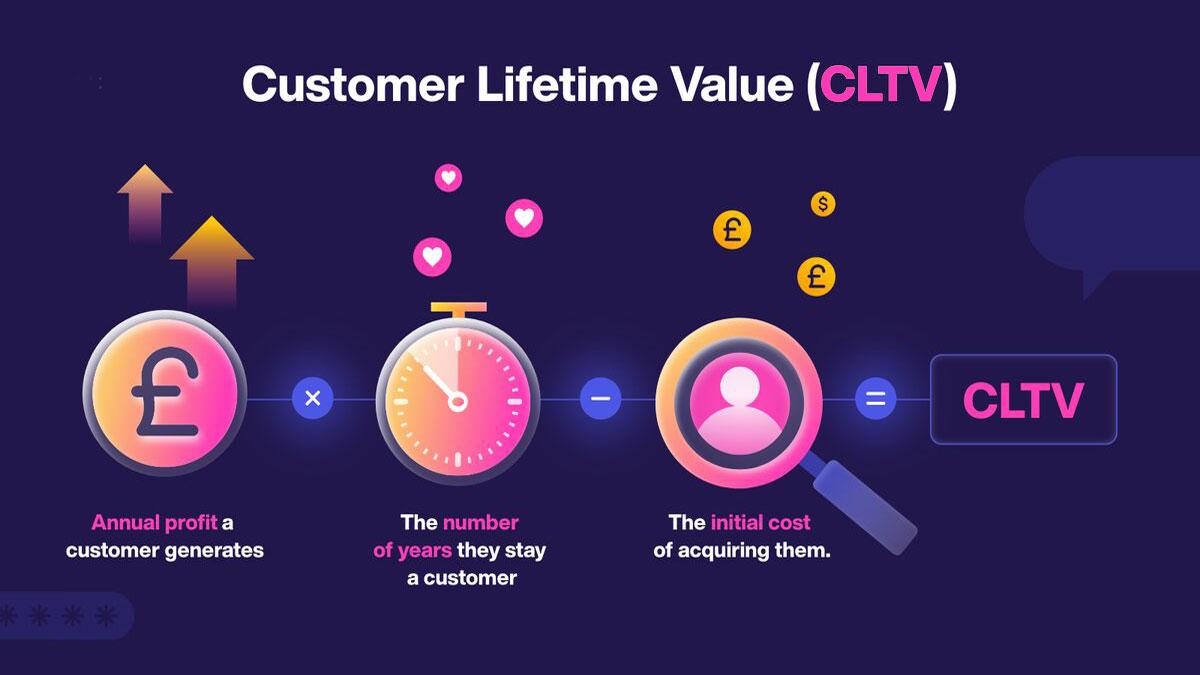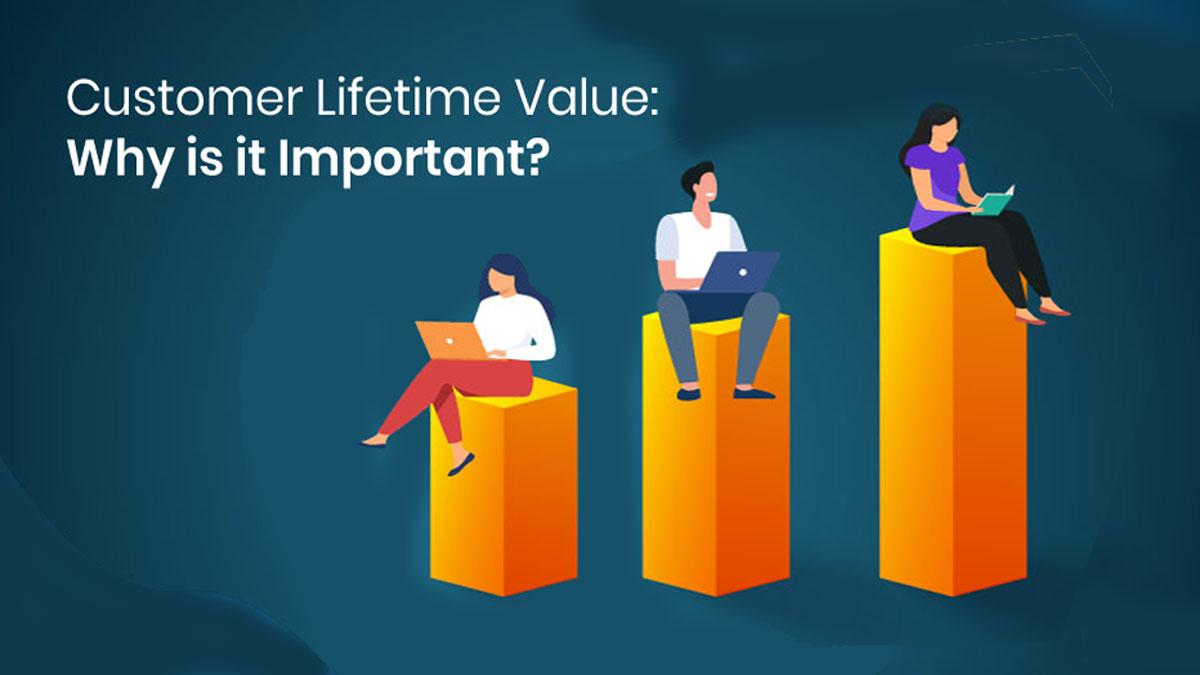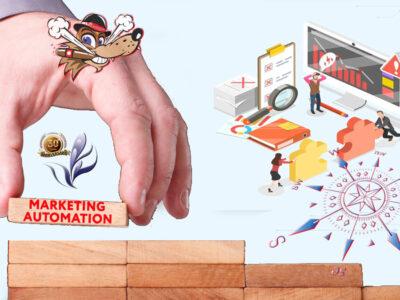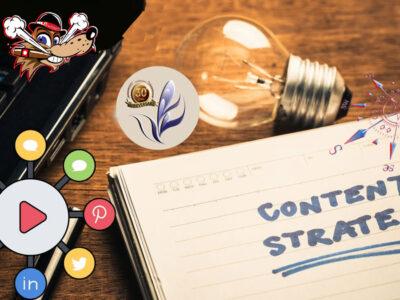Here after are strategies for maximizing customer lifetime value and growing your business. Topics include:
Understanding how to increase customer lifetime value allows you to identify your most valuable customers and allocate resources accordingly. You’ll also be able to:
Customer lifetime value maximization doesn’t just focus on the now but also helps guarantee the long-term success of your business. Let’s review how to increase LTV for improved profitability.
How To Increase Customer Lifetime Value
To improve customer lifetime value means investing in CLV marketing initiatives that encourage repeat purchases, increased spending and brand loyalty.
1. Listen to Customer Feedback
Actively seeking and listening to customer feedback can help businesses identify areas for improvement and enhance the customer experience.
You can collect feedback by sending out surveys after a purchase, leveraging social media for real-time interactions with customers, setting up a poll on your website or even reaching out to customers via email. Once you have gathered feedback, analyze it to identify common pain points and use your findings to further maximize customer lifetime value.
2. Implement a Loyalty Program
A loyalty program incentivizes customers to return and purchase more by offering rewards and discounts using loyalty cards, loyalty apps or point schemes. These programs increase customer lifetime value by encouraging higher spending through exclusive perks.
A common CLV marketing tactic using loyalty programs is to offer customers a discount on their next purchase after reaching a certain spending threshold. Your customers will feel appreciated and are more likely to continue shopping with your brand.
3. Upsell and Cross-Sell Relevant Offers
Upselling involves encouraging customers to purchase a higher-end or upgraded version of a product they are interested in. Cross-selling refers to suggesting complementary products that go well with their purchase. Both these tactics increase the average order value and encourage repeat purchases.
Let’s say you own a beauty brand, and a customer purchases a face cream. You can upsell by offering an upgraded version of the same product with added benefits, while cross-selling could involve suggesting a matching face wash or serum. Additionally, pricing strategies, such as bundling products or offering discounts for bulk purchases, can encourage customers to spend more and maximize customer value.
4. Focus on Personalization
Personalization is key to maximizing customer lifetime value. By understanding customers’ preferences, you can create tailor-made experiences that increase satisfaction with your business.
Some ways to personalize the customer experience include:
• Sending personalized emails and offers based on purchase history.
• Offering product recommendations based on customer preferences and past purchases.
• Providing personalized customer service through chatbots or dedicated representatives.
• Utilizing customer data to personalize marketing efforts and target specific segments with relevant messaging.
• Providing personalized post-purchase follow-up communications to ensure customer satisfaction.
• Offering exclusive access to products or services based on customer loyalty or engagement levels.
• Implementing dynamic pricing strategies that adjust based on customer behavior and purchase patterns.
Customers want to feel valued, so incorporating personalization into your marketing efforts can significantly improve customer lifetime value.
5. Embrace Omni-Channel Marketing
Customers today interact with businesses through multiple channels – online, in-store, social media, etc. To increase customer value, it’s essential to have a cohesive and seamless omnichannel marketing approach. This ensures customers can easily engage with your brand and have a consistent experience, regardless of their chosen channel.
For example, if a customer sees an ad for your product on social media, clicks on it and is directed to your website, they should see the same messaging and branding as the ad. A disjointed omnichannel approach can lead to confusion – something you don’t want if your goal is to maximize customer lifetime value.
6. Improve the Onboarding Process
Customer lifetime value maximization begins when a customer makes their first purchase. A smooth and positive onboarding experience can set the tone for future interactions and encourage customers to return.
Ensure the purchasing process is seamless and straightforward, with clear communication about delivery times, returns policies and other relevant information.
Journey mapping is useful for identifying pain points in the onboarding process and making improvements accordingly. You can also consider tailoring the onboarding sequence to specific buyer personas so that customers receive a personalized experience from the start. Finally, test and monitor your onboarding process to eliminate friction, such as slow loading times, confusing navigation and broken links.

7. Introduce Recurring Revenue Streams
When customers make a one-time purchase, their lifetime value is limited. By introducing recurring revenue streams, such as subscriptions or membership programs, you can increase customer lifetime value significantly.
These models provide a steady income stream and encourage customers to purchase from your brand regularly. For example, a meal plan service can offer weekly or monthly subscriptions to customers. Customers who opt for the monthly plan will receive 5% off their total bill. Not only does this incentivize customers to continue using the service, but it also encourages them to sign up for longer subscription periods, hence increasing their lifetime value.
8. Interact With Your Community
Build a strong community around your brand to increase customer value. Engaging with your community allows you to understand their needs better while building trust and rapport. Happy customers who feel connected to your brand will likely continue supporting your business and increasing their lifetime value.
Interact with your community by:
• Using social media to engage customers and respond to their comments and queries.
• Organizing events or workshops related to your products or services.
• Encouraging customers to share their experiences with your brand through reviews and testimonials.
• Collaborating with influencers or brand ambassadors who align with your brand values.
• Hosting virtual or in-person focus groups to gather feedback and insights from your community.
• Build a referral program that rewards customers for bringing new business to your brand.
Actively interacting with your community fosters a sense of belonging and improves customer loyalty – both critical for customer value maximization.
9. Track and Analyze Customer Behavior
Monitoring customer behavior involves tracking customers’ actions and interactions with your business, such as browsing patterns, purchasing frequency and product preferences. You can analyze this data to identify shifts in their purchasing patterns and gain insights into how customers engage with your brand. Then, leverage this information to personalize CLV marketing efforts and enhance the overall customer experience, which, as we know by now, are necessary to increase customer lifetime value.
10. Offer Stellar Customer Service and Support
Quality customer service is essential to retain customers and increase customer value. A positive customer service experience leaves a lasting impression and encourages customers to continue supporting your brand.
Here are four tips for providing stellar customer service to maximize customer value:
- Train Your Support Team
Investing in training your support team on effective communication, problem-solving and empathy can help provide excellent customer service consistently. They should also have in-depth knowledge of your products or services to answer questions or concerns accurately.
- Be Easily Accessible
Make it easy for customers to contact you with their inquiries or complaints. Offer multiple channels for customer support, such as email, phone and live chat. Responding promptly and efficiently can help resolve issues quickly and prevent customer churn.
- Personalize the Experience
Treat each customer as an individual and personalize their experience with your brand. Use their name in communications, remember their purchase history and offer relevant recommendations or promotions based on their preferences.
- Use Chatbots
Integrating chatbots into your customer service strategy provides 24/7 support and improves response time. Chatbots can handle routine inquiries, freeing your support team to focus on more complex issues.
But, of course, nothing beats the personal touch of a live chat with an actual human. Having both options available can cater to different customer preferences and improve overall customer value maximization.
11. Launch Email Marketing Campaigns
Email marketing remains one of the most effective ways to connect with customers and increase customer lifetime value. It allows you to nurture existing relationships, promote your products or services and drive repeat purchases. However, some brands make the mistake of running automated drip campaigns and neglecting to personalize their email communication. Here’s how you can avoid this:
- Segment Your Email List: Use customer data to segment your email list based on demographics, purchase history or engagement levels. This allows you to send targeted and relevant emails that resonate with each customer segment.
- Personalize Content: Address customers by name and use personalized product recommendations or promotions based on their preferences. This can help improve open rates and drive conversions.
- Don’t Overdo It: While regular communication is essential, bombarding customers with too many emails can lead to unsubscribes or a negative perception of your brand. Find the right balance and frequency for your audience.
- Offer Value: Provide valuable content such as informative articles, tips, or resources in your email campaigns. This can help build trust and establish your brand as an authority in your industry.
What Is Email Segmentation, Why It Matters, How To Get It Right?
Pro Tip: The most effective emails to send to your customers are those that highlight the value of your product or service.
For instance:
• If you provide cruelty-free cosmetics, send an email explaining the importance of using cruelty-free products and how you align with that cause.
• If you offer eco-friendly cleaning products, share tips on how customers can live a more sustainable lifestyle.
• If you offer a subscription-based service, send personalized recommendations based on the customer’s usage history.
Your main goal with email marketing should be to provide value and maintain a positive relationship with customers instead of focusing solely on direct sales. This will organically improve customer lifetime value over time.
12. Manage Your Online Reputation
With customers having access to various review websites and social media platforms, one negative review or comment can significantly impact customer perception and potentially lead to loss of business.
To manage your online reputation effectively:
- Monitor Reviews: Regularly monitor reviews on popular sites like Google, Yelp and Trustpilot. Respond to both positive and negative reviews promptly and professionally.
- Engage on Social Media: Actively engage with customers on social media by responding to comments, messages and mentions. This shows that you value their feedback and are willing to address any concerns they may have.
- Encourage Positive Reviews: Be bold and ask satisfied customers for a review or testimonial. This can help counter any negative reviews and improve your overall online reputation.
- Address Negative Feedback: Instead of ignoring or deleting negative feedback, address it publicly and offer a solution. This shows transparency and a willingness to improve, which can leave a positive impression on potential customers.
Sustaining a positive online reputation can help maintain the loyalty of existing customers – a bullet-proof method to increase customer lifetime value.
Maximizing customer lifetime value requires attention to every aspect of the customer experience. Following each step of what you have read above gives you a headstart but it’s a gamut of processes.


















Comments